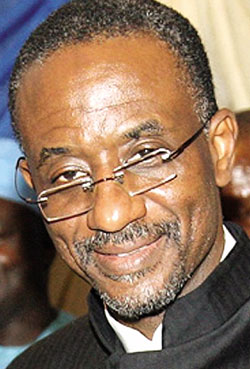The Monetary Policy Committee has retained the monetary policy rate at 12 per cent. The Central Bank Governor, Malam Saunusi Lamido Sanusi, disclosed this while briefing newsmen on the outcome of the 231 committee meeting in Abuja. This is the ninth time the committee had maintained the rate at 12 per cent considering the inflation rates and other macro-economic indicators.
Sanusi said that the committee took the decision after careful deliberations on the major three options it had. “The committee was faced with three options; the first was increase in rates in response to optic and headline, food inflation and pressure on exchange rate.
Second, a reduction in rate in view of declining core inflation and GPD growth and third retaining current monetary policy stance to sustain the gains of monetary policy while utilising the existing space in the corridor to influence yokes and exchange rates in the short term.’’
According to him, the committee considered and rejected option one as being unnecessary since there are no major inflationary concerns. “While acknowledging the merit of argument in favour of option two, it was also rejected by the majority because it could send a wrong signal of premature termination of an appropriately tight monetary policy stance. The committee, therefore, decided by a majority vote of nine to three, to accept option three and maintain the current policy stance that is to retain the MPR at 12per cent with the corridor of plus or minus 200 basis point. Retain the cash reserve requirement at 12 per cent and liquidity ratio 30 per cent with net open position at one per cent.’’
The CBN governor said that the committee was satisfied with the macro-economic stability in spite shocks from external and domestic economic environment. He said that the committee noted that the core inflation at 9.0 per cent and 9.05 per cent in January and February and the price data could send a signal of upside risk to inflation in the medium term. He said that the committee was of the view that growth in the domestic capital market was given by huge capital flows.
Sanusi said that risk to economic stability in the medium to long term could be addressed by diligent implementation of sound polices of fiscal consolidation and structural reforms. “Without this, the economy will not be able to attract long term foreign capital inflow that makes the gains of monetary policy sustainable, at least, safe the economy from risk associated with external shocks. Monetary policy will, therefore, seek to preserve the gains of macro-economic stability in the short term while the fiscal and structural policy thickens.’’
He said that low lending rate could be achieved if the necessary infrastructures like good roads networks were put in place.
On the 2013 appropriation, Sanusi said that the oil benchmark of 79 dollars per barrel might slow down the pace of fiscal consolidation. He said that committee, however, expressed satisfaction with the significant accretion to external reserves which stood at 49.38 billion dollars as at March 14.
“Representing an increase of 5.5 billion dollars or 12.68 per cent over the level of 43.83 billion dollars at end-December 2012. The increase in reserves was driven largely by the proceeds from crude oil and gas sales and crude oil-related taxes, as well as reduced funding of the WDAS.’’ Sanusi said that the reserves level could finance 13 months of imports, adding that the committee, however, advised the apex bank to sustain its monitoring of portfolio and foreign direct investment flow.

